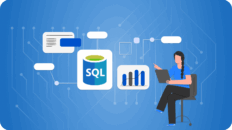1. Introduction
- Purpose of this explainer: A high-level deep dive into the methodology behind the solution without discussing technical implementation.
- Future explainer will cover how Excel actually implements this step by step.
- Why this solution?
- Traditional enterprise solutions (IBM, Oracle, SAP) are expensive and complex.
- This Excel-based solution offers a lightweight, scalable, and cost-effective alternative.
2. Core Data Architecture
2.1 The General Ledger (GL) Data Source
- The General Ledger (GL) in the ERP system contains all financial transactions.
- Direct querying of the ERP system is not feasible due to:
- IT security policies.
- Performance impact.
- Solution: GL Clone Table (GLC)
- A replica of the GL database, updated periodically.
- Ensures smooth querying without burdening the ERP system.
2.2 Understanding the Data Structure
- GL Clone Table (GLC) contains financial transactions:
- Fields: Period number, Journal reference, Posting date, Account codes, Debit/Credit amounts.
- The Group Map Table structures business hierarchy:
- Levels: Region → Country → City → Shop.
- Enables multi-level drill-down and consolidation.
- Additional tables:
- Comments Table: Stores user comments and potential journal adjustments.
- Access Rights Table: Determines what data each user can see.
- Users Table: Stores usernames and login credentials.
3. Budget Holder Review Process
3.1 Selecting a Shop for Review
- Budget holders (e.g., Paul in Japan) select a shop using cascading dropdowns.
- Click “Get”, triggering a query to retrieve filtered GL data for the selected shop.
- Multiple users can work independently without interference.
3.2 Identifying Anomalies in the Financials
- Budget holders review actuals for the period.
- If an unusual transaction is found:
- Selecting a cell triggers a detailed query to retrieve transaction-level data.
3.3 Adding Comments or Adjustments
- Budget holders enter comments directly in Excel (e.g., accruals, prepayments, errors).
- Click “Put”, which uploads comments to the Comments Table.
- This provides a structured method for flagging transactions.
4. Finance Team Review and Adjustments
4.1 Retrieving Budget Holder Comments
- Finance team retrieves all flagged transactions using their own Excel workbook.
- Reviews and categorizes comments:
- Errors → Correct in General Ledger.
- Prepayments/Accruals → Make appropriate adjustments.
4.2 Making Journal Adjustments
- Adjustments are recorded in the General Ledger.
- Automated Journal Entry Creation:
- Excel can generate a CSV file formatted for direct ERP import.
- Eliminates manual journal entry, improving efficiency.
5. Final Validation by Budget Holders
5.1 Refreshing Updated Financials
- Budget holders refresh their reports to see adjustments reflected.
- Once validated, they mark their review as “Confirmed”.
- This status update is recorded in the Review Status Table.
5.2 Controller-Level Oversight
- The Controller’s dashboard provides an overview of review status across all shops.
- Color-coded indicators show real-time progress.
6. Consolidation and Multi-Level Review
6.1 Why Consolidation?
- Users may need to review aggregated data at different levels:
- Shop level (Level 4) → City → Country → Region → Full Group.
- Selecting a higher level in the hierarchy triggers an aggregated query.
- The same mechanism, but with a modified query, retrieves summarized financials.
6.2 User-Specific Access Control
- Each user sees only the data they are authorized to access.
- The Access Rights Table filters data dynamically based on the username.
- Example:
- John retrieving “Africa” data will see different figures than Chris retrieving “Africa” data, based on assigned regions.
- CEO (Top Man) has full access to consolidated group-level financials.
7. The Five Key Database Tables
- GL Clone Table (GLC): Stores transactional financial data.
- Group Map Table: Defines organizational structure.
- Comments Table: Stores budget holders’ flagged transactions.
- Access Rights Table: Determines data visibility for each user.
- Users Table: Stores login credentials.
Understanding these five tables is critical for understanding how data is retrieved, filtered, and updated.
8. Summary of Key Concepts Learned
- Database Fundamentals:
- Understanding tables, fields, records, and relationships.
- Querying at Different Levels:
- Retrieving data at shop level or aggregated at higher levels.
- Dynamic Filtering with User Access Rights:
- Ensuring users only see what they are authorized to see.
- Bidirectional Data Flow:
- Retrieving GL data (GET).
- Submitting comments and adjustments (PUT).
- Status Updates and Monitoring:
- Tracking review progress using the Review Status Table.
9. What Comes Next? (Future Explainers)
- We haven’t discussed Excel implementation—just the principles behind the system.
- Next step: How Excel interacts with this architecture.
- No Power Query, no dynamic arrays, no Excel tables.
- Simple yet powerful “Get” and “Put” functionality.
- Comparison with traditional methods (Power Query, Dynamic Arrays, etc.).
- Why those approaches are clunky and inefficient for enterprise use.
- Why this solution is easier, faster, and more scalable.
10. Conclusion
- A streamlined, enterprise-ready budget review system using Excel and a database backend.
- Key benefits:
- Lightweight, efficient, and cost-effective.
- Real-time collaboration without performance issues.
- Audit trail and accountability at every stage.
- Next step: A technical deep dive into how Excel actually implements this process.
This final outline provides a complete structure of the entire process. Let me know if you want to tweak any sections! 🚀






Add comment